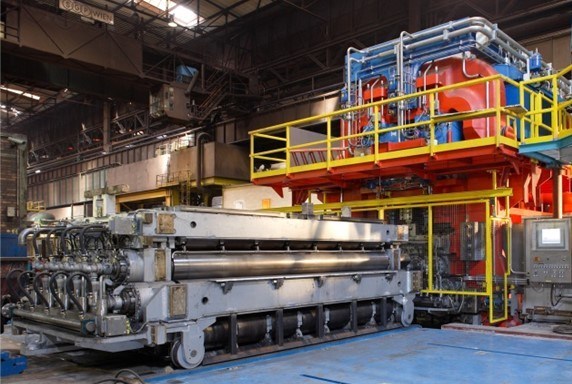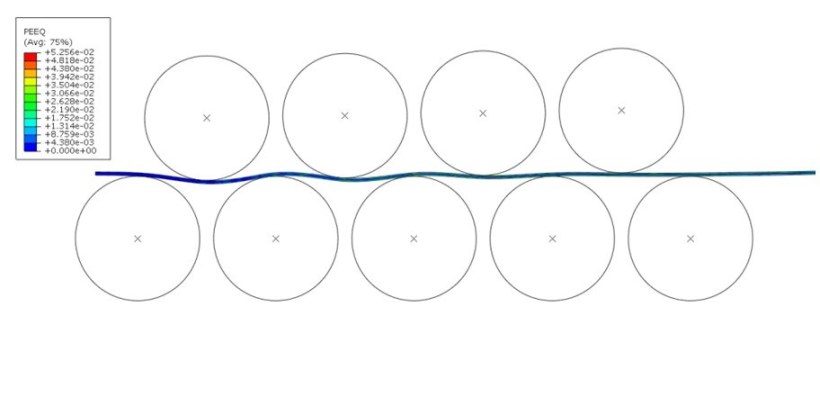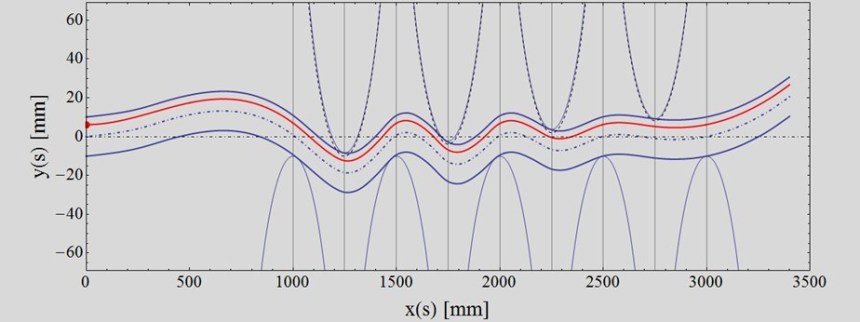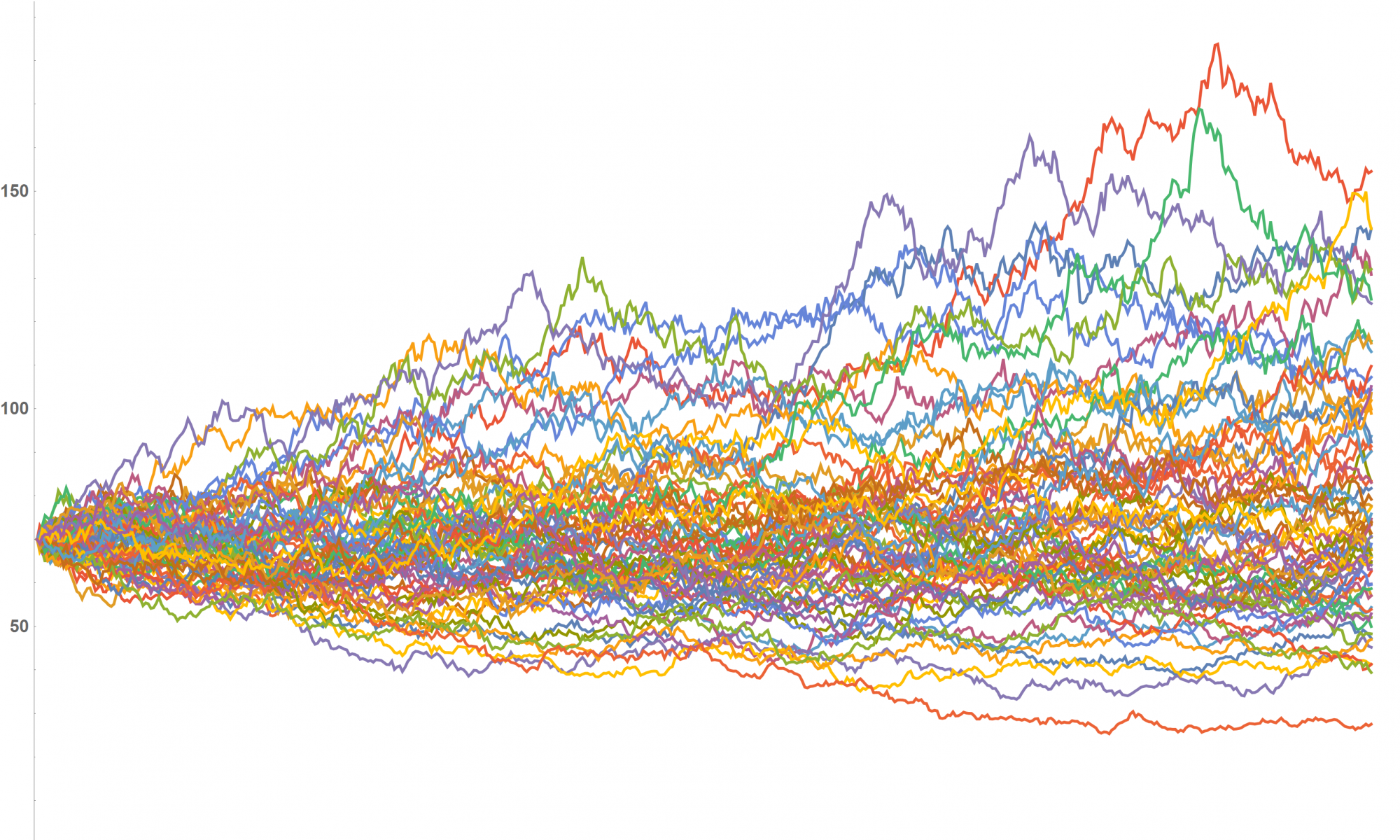Michael Liebrecht presented our results on the modelling and simulation of leveling machines at NUMIFORM 2019 in Portsmouth, New Hampshire (see the abstract below). These were obtained jointly with voestalpine Grobblech.
Process Model for the Industrial Plate Leveling Operation with Special Emphasis on Online Control
M. Liebrecht, A.-K. Baum, R. Wahl, M. Aichinger, and E. Parteder
To produce high quality steel plates that meet the customer’s requirements, physically based models are increasingly used in the automation systems of the production process. In this work, a 2D model to describe the levelling process of the heavy plate production is presented. The model is based on Euler beam theory and features isotropic hardening of the material and the elastic response of the leveling machine. It enables the computation of the full stress-strain-history, all contact points and contact forces between the plate and the levelling rolls as well as the power consumption. The results are validated using the multi-purpose finite element software ABAQUS and compared to measured forces recorded during production. Core of the implementation is a damped Quasi-Newton method to minimize the free enthalpy of the system. Changes of the mechanical properties of the plate caused by the levelling operation can be calculated from the stress-strain history.
The computation time of the presented full 2D model is dramatically lower compared to the multi-purpose finite element solution. Nevertheless, due to time constraints during the production process, it is not feasible to apply the full 2D model in order to determine the optimal positions of each levelling roll before plates enter the leveler. To achieve this goal, a surrogate model based on vast parameter studies was developed. The parameter studies were performed using the full 2D model and cover all possible levelling roll positions and a wide range of material behaviour.



